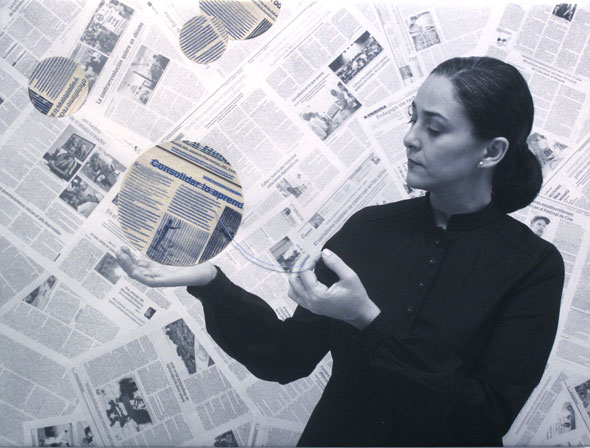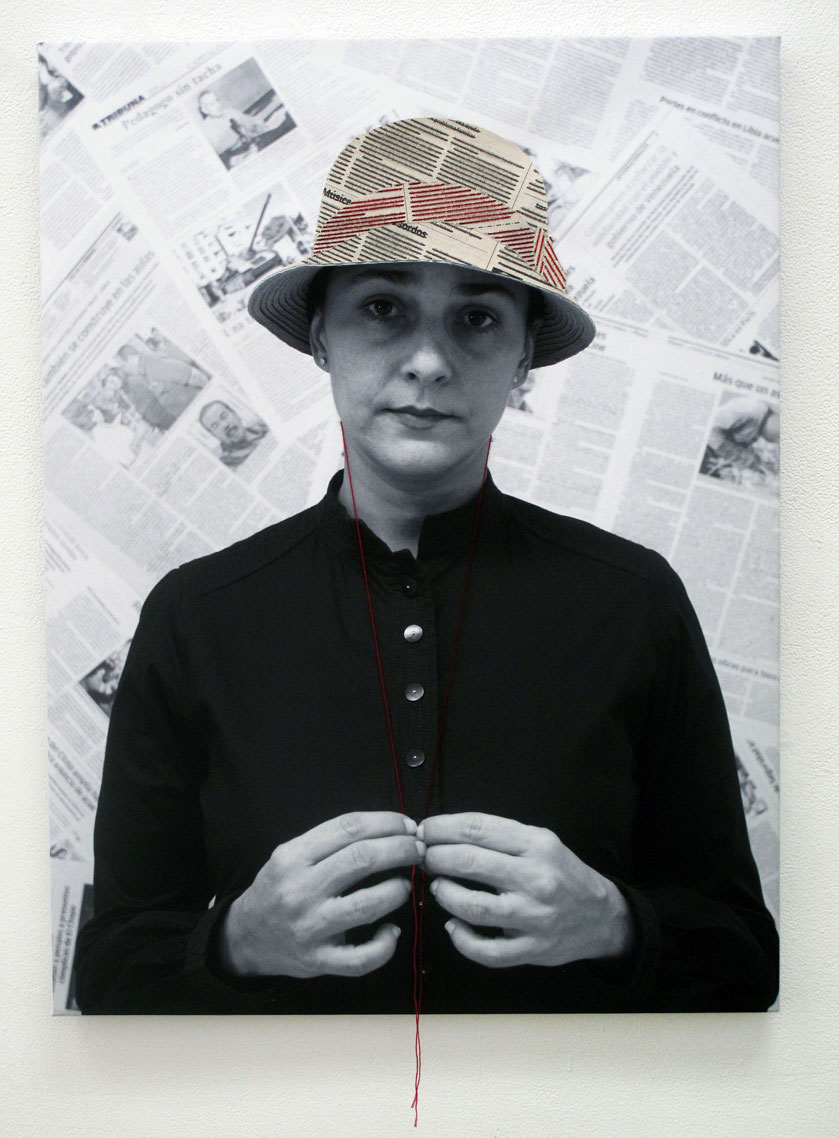Like many Cuban artists, Aimée García has learned how to avoid censorship while still communicating her message and ideas. In García’s current body of work titled “Suprematist Speech,” she combines self portraiture with appropriated fragments from the government controlled newspapers Granna and Juventud Rebelde, obfuscating the text. The transformation of information—in this case the authoritative party line—into shapes and color separates it from its source and reduces it to pure form. García’s laminated and embroidered collages are abstractions presented in a grid. Individually, each piece begins with a fragment or fragments of the printed newspaper in which each line of type, headline and image has been covered by thread. These pieces resemble Jaime Scholnick’s “Gaza: Mowing the Lawn,” a body of work where colorful hand-drawn lines masked a newspaper image of conflict. Where Scholnick’s work was a reaction to a conflict from afar, García is embroiled and through her art searches for ways to come to terms with the situation.
The works in “Suprematist Speech” (all works 2016) are García’s personal interpretation of Malevich’s universal quest: the search for art reduced to its barest essentials. Malevich espoused a reduction of forms to their essence, creating an abstract art based upon “the supremacy of pure artistic feeling rather than on visual depiction of objects.” With their content and context obscured, these intertwined blocks of color follow Malevich’s Suprematist doctrine. A second series of newspaper collages, Obsequio (Gift), are affixed to unassembled cardboard boxes of common household products whose irregular shapes push the pieces away from the didactic toward pure abstraction. These collages defamiliarize the daily newspaper transforming it into carefully constructed compositions that blur the boundaries between known and unknown.
García speaks of her work as a space for reflection and meditation where the concerns inherent in life—history, memories, and the roles of individuals in their social and personal environments—flow together. These ideas are best articulated in her photographic self portraits where she poses in front of a background of overlapping newspaper pages. Dressed in black and performing for the camera, García then collages embroidered newspaper clippings as lapels of her jacket, the collar of her dress, her hat and glove, often using thread to tie the image together. For example, in Tied (Ammarre) García’s hands fondle two red threads that emanate from behind her head. In Bubbles (Burbujas) a large sphere of newspaper whose text is covered by blue thread sits in the artist’s outstretched hand as three smaller ones float toward the top of the composition. Holding a piece of the thread with the other hand, as if not wanting to let it float away, she gazes at the unreadable bubble of text.
García combines printed ephemera and photographic reproductions with the intention of transforming printed truths into evocative abstractions. The works take a stand by blocking authoritative texts, reducing them to shapes and colors while relating them to Suprematist ideals. Through wit and cunning, García thwarts the words of the authorities, giving her viewers a meditative space to position their understanding.



